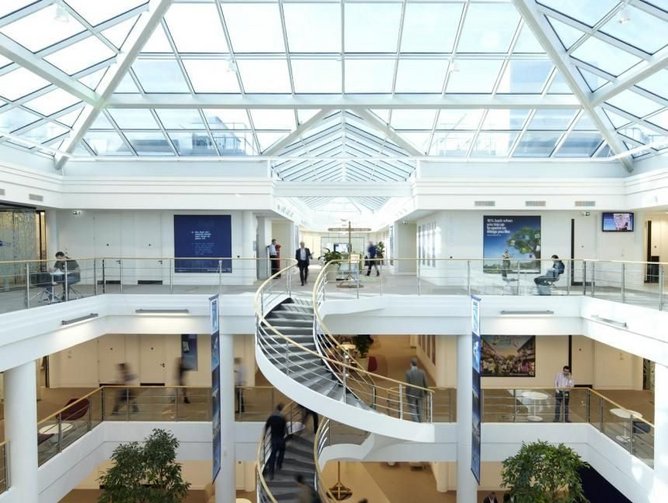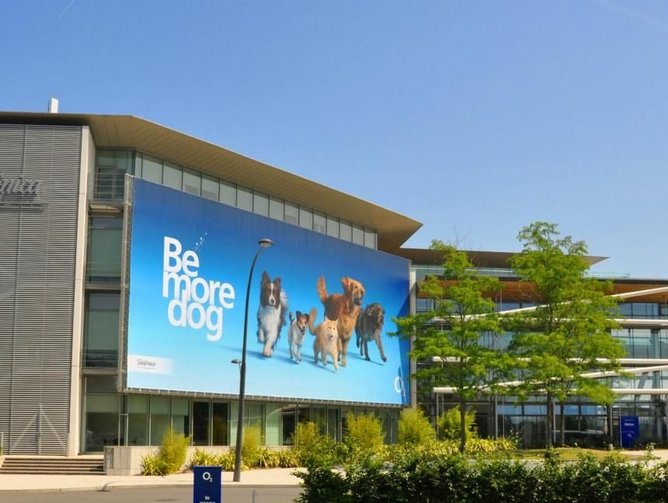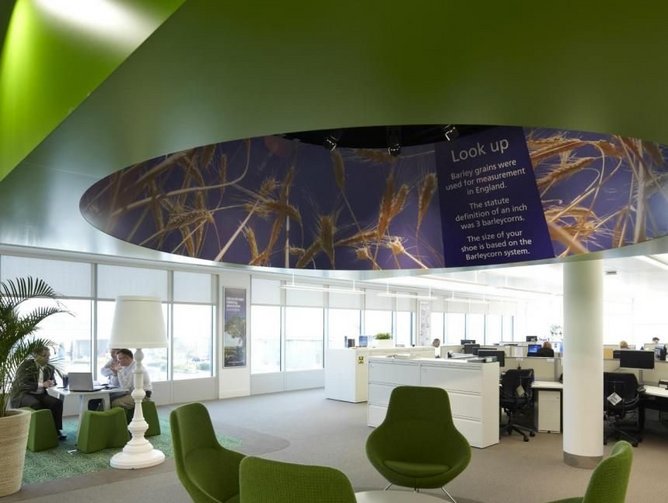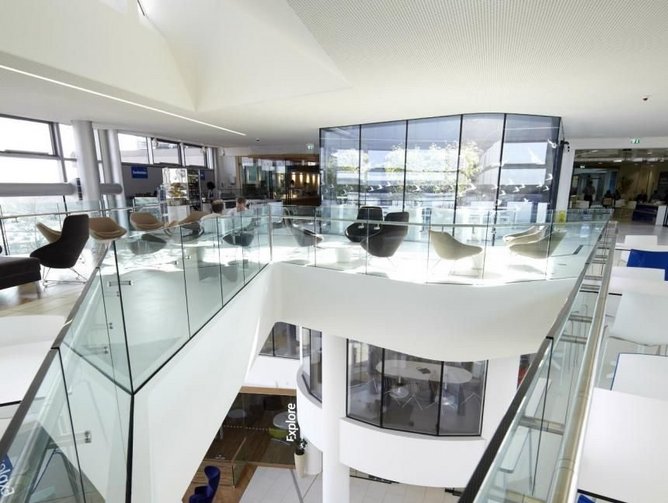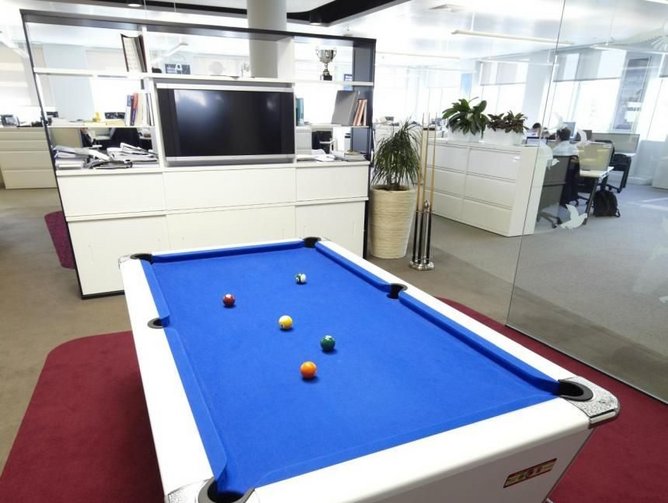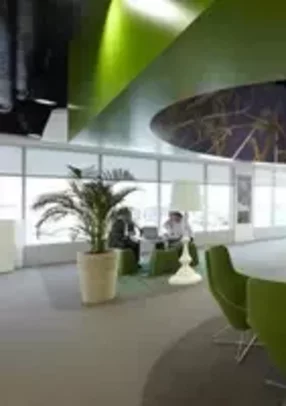Telefónica UK, that operates under one of the most popular and successful consumer brands in the UK – O2, is evolving, but whatever the future holds that future will be shaped, and increasingly led, by IT: we speak to CIO Brendan O’Rourke about this trend.
It can’t have been easy for Telefónica’s UK business to stay focused over the last six months or so since the announcement that it was to be acquired by CK Hutchison. However, its leadership team’s priority has been to continue looking after customers, delivering the very best experience that they have come to expect from O2.
We have written recently about Telefónica’s proposed shared services model for all its operating businessess, centralising in what the Global CIO Phil Jordan described as a “whole new era of full stack, business-led IT transformations.”
The UK business had been in preparation for eight months when, with the impending divestment added to the sale of the Czech, Slovak and Irish businesses and merger of the German business with E-Plus and its flotation, put an end to Telefónica Global Technology in Europe. However O2 has not been diverted says O’Rourke. “We have done a particularly good job in the IT team in keeping the focus on the here and now.”
This is borne out by the fact that it has done better financially in the last year than in the preceding six years, and O2 is now a leading digital communications company with the highest customer satisfaction with customer service for any mobile provider according to Ofcom.
“We believe the opportunity that technology gives people is massive and that people’s potential is not just a business issue but a social and societal issue that we want to address. We are a leading mobile player in a market that is probably the most competitive and the most innovative in the world,” he says. But innovation itself needs to be driven by customer engagement, “We are going to focus our transformation and capacity investment on those areas that can be differentiated through IT, areas that will be identified from what we learn about customer preferences.” Investment driven by customer insight and experience is, he believes, what differentiates O2 in its market, and is illustrated by the ways in which Julie Sadler’s IT Engagement and Delivery team works closely with North Highland to analyse and understand customer and business requirements to deliver new services.
Top line revenue growth can no longer come from commodity offerings like voice, text and data bundles, though demand for network capacity is increasing exponentially. “We have found that since we rolled out LTE we have seen 100 percent year-on-year growth in data usage.” O2 has reached 66 percent 4G penetration and has committed to 98 percent indoor coverage by the end of 2017.
This in itself will not differentiate the business. Connectivity is all very well, but ‘connectedness’ is where the real growth opportunity lies. “Our business strategy is to provide a great customer experience, making sure people can leverage all the potential of the technology but delivering it in a way that emphasises the connectedness on top of the connectivity.”
Examples of what he means are business applications like Office 365 and MacAfee security (“We are the fastest growing UK reseller of these products – and we are a mobile business!”) or Just Call Me, a very simple, cheap way of setting up a conference call aimed at small businesses.
“We also offer Mobile Voice Recording to Enterprises, a network-based service that captures calls and text messages made and received on any mobile device, regardless of operating system.” This is important for any business these days, and for some like banking or insurance, a regulatory requirement.
Innovation is key to competitive differentiation
O’Rourke has been at Telefónica for six years, developing the digital online platform, then assuming global responsibility for rolling out digital products to the Operating Businesses around the world in a standardised form that they could deploy with ease, before coming to O2 as CIO. “In my career I have spent a lot of time rolling out mobile networks and IT around the world as the mobile ‘wave’ rolled out to Latin America and Asia. I believe that experience has given me a great insight into how different markets innovate and what is important in the UK.”
He considers the UK as the world’s most innovative digital market but taking Bill Gates’s mantra: ‘We always overestimate the change that will occur in the next two years and underestimate the change that will occur in the next ten’ as a starting point, he says the focus right now has to be around enabling customers to adopt the not-so-new services like Office 365, which represent massive change for them.
“Creating the ability for them to transform is innovation today: meanwhile the lab is asking, what will be the behavioural change in work that we need to deal with in five years’ time?” Don’t overestimate the speed at which they will adopt the next big things like the cloud.
The 15 or so people who work in Telefónica UK’s award-winning IT lab keep their eyes firmly on the revenue potential of innovation. They are encouraged to pursue and test ideas, some of which do not work when tested in user groups – this way we fail fast and cheaply. Others really fly – for example TU Go, a free app that allows customers to text or call anyone, not just an O2 customer, or check their voicemail over Wi-Fi – even in the absence of a signal, and using multiple smart devices. “It is quite different from other Wi-Fi calling applications on the market. We started in the lab, prototyped in the lab, gave it to customers to try, and it is now Telefónica’s global Wi-Fi calling app.” This is the lab at its most effective.
Horses for courses
The lab is just one of the teams Brendan O’Rourke is driving, though one that epitomises his obsession with people and skills driving business value.
When he took up the reins O’Rourke found an IT function that was fragmented. “We were perceived by the businesses as an enabler, good in parts, less good in others, and we had complexity and cost challenges.” That neat euphemism means he had to pare down his department, refocusing on the skills and roles needed for the future. “My vision for IT is to enable it to differentiate the business through technology. That is where we want to be. To get there we have to think forward and consider the revenue and margin opportunities of the future, the skills they need and how to get those skills into our business.”
“That showed me we are doing the right things. We are introducing new career paths. We have defined seven skills for the future: information security; service; product development; IP networking; commercial & vendor management; Internet of Things/cloud and information & data.”
This means that there are great opportunities for new graduates, and also that mid-career staff, versed in skills like billing systems, can retrain – and gaining professional accreditation is part of that – in roles the business needs going forward, such as cyber security or business intelligence. The very skills that are sought after in the wider jobs market.
The new strategy leader
Redefined individual roles reflect the emergence of IT as a business leader. “One of the first things I realised was that IT ought to move from an enabling function to a differentiating function. It was clear to me at the time that there were a number of areas where we had to focus. One was our relationship with the business, how to act more like consultants and smart technology partners. Another, to ensure that we manage, with our suppliers, to deliver new technology effectively.”
The journey has five stages, he elaborates, functional, enabling, contributing, differentiating and finally transforming. “When I came in we were on the boundary of functional and enabling. We have just completed our annual assessment and we are now solidly contributing, so we have moved up a whole level of maturity over the last two years and with it my role as CIO has grown too.
“I firmly believe there are certain things a CIO has to do. You create your role based on where you think you can make the right business difference. I have gone from somebody who runs delivery and operations to somebody who is leading a team that is challenging the business through innovation, driving the digital revenue story, looking at large scale transformation and leading that in the business.”
In this the voices of CIOs and CTOs of large organisations can be heard chorusing their agreement. To paraphrase the industry guru Gartner, a company without an IT transformation strategy now, will not exist five years’ hence. IT has left its image as a service department behind it and is accepted as a strategy leader, having moved from managing cost to delivering value.
Well … nearly. There is still pushback at all levels. “You have to work hard with your team to change the mindset,” he acknowledges. “If you are growing the top line of your business by differentiating it with technology you are making a real difference. Critical to this is an effective Enterprise Architecture, Strategy and Planning team such as O’Rourke is building under his Chief Architect Chris Barnard.
“If all you are doing is managing your cost base and your delivery function you are a functional leader, which is fine but that is not the role of the CIO any more. One of the roles of the CIO in the future is going to be to oversee the federation of IT into the business. Technology is what business will be about.”
Partners in progress
Finally, there’s going to be a step change in the area of supplier management. The IT department comprises around 380 people, running everything from IT operations, lab innovation, and app development to corporate platforms like email, the intranet and workplace. However there’s a huge support base of around 175 suppliers with, between them, perhaps another 2,000 people. “We have around a dozen or so top suppliers, or partners and probably about 80 percent of our spend is with these.”
Partners like Accenture, Cognizant and Equal Experts will be key to the omnichannel plan. Cognizant drives much of Telefónica UK’s business critical online applications for e-commerce, while Accenture takes on the multivariate testing that looks at what improvements need to be made to the site and how they should be deployed. “Just moving things around on the page can make a big difference to how the customer perceives the experience,” O’Rourke points out. Equal Experts provides technical leadership, delivering complex projects like O2 Priority, a loyalty app that since 2011 has been giving customers special offers, free stuff, 48-hour preview access to Channel 4 TV content, concert tickets and a deal where you can get lunch for £1 on a Monday from a number of partners such as Boots and Dominos.
Understandably this is very popular, so traffic peaks on that day. “You can’t manage that with on-premise infrastructure,” he stresses. “Every Monday we use the elastic cloud to meet that massive peak in demand and on a Tuesday we can bring it back down with no penalty. It meets our needs at the lowest possible cost.”
Underpinning the digital future is the need to operate the IT estate efficiently and effectively, delivering great customer experience, not just infrastructure availability. Quality is critical. Lisa Turpin’s IT Service, Sourcing and Delivery team work key partners such as Tata Consultancy Services driving efficient and effective infrastructure, IBM, which is Telefónica’s long term partner for billing services and manages the core of O2’s consumer estate, NTT DATA who is our custodian of quality ensuring the customer experience is protected and Tech Mahindra in the Operational Systems space help us ensure success for our customers in the services we deliver.
The relationship with these partners will be much more than simply a matter of buying in services. “They care because we are a big contract for them; we care because they are strategically important for us,” he explains. “Over time we intend to move towards a fewer number of suppliers, more value based contracts, and more scope so you get a better peer to peer relationship.”
Looking ahead
Nobody can predict how O2 will stand in a year’s time. If the sale goes ahead a blend with Li Ka-Shing’s Three will make it the UK’s largest operator , but for now that is speculation and a job remains to be done. The last year has been one of solid achievement for the company, winning awards for its digital programme, for example Website of the Year which it recently won again for the second year running and Business Service Innovation Award at the Global Telecoms Innovation Awards 2015 for it’s Digital SMB proposition. Awards like these recognise Telefónica UK’s progress in capturing digital omnichannel traffic, all the real world and web-based places where the company interfaces with its users. “In company with some truly outstanding partners, we have become the leader in the mobile omnichannel,” says O’Rourke.
This is supplemented by an outstanding in-house team from the top floor to the shop floor, to whom Brendan O’Rourke gives every credit. Earlier this year leadership was strengthened by the appointment of Jennifer Rigby, formerly Director of Corporate Security at the Home Office, as Head of IT Channels and Innovation and her work has already been nominated for Women in IT Award 2015. And O’Rourke is particularly chuffed that two of his younger staff were shortlisted for the prestigious BCS IT Awards this year, Anna Watson for IT Manager of the Year and Kevin Condliffe for Young IT Professional of the Year – this is a tribute, he says, to the O2 talent management process.
Also critical to O2’s success is the ability to provide their employees great tools for the job and a great working experience, “We have been leading proponents of remote working and Bring Your Own Device (BYOD) and such flexibility is highly appreciated by our people. We are continually driving new tools into our business; we have become great adopters of Lync (Skype for Business), Yammer and most recently OneDrive.” With companies such as TechMahindra, O2 are looking at how they can leverage their own Internet of Things capabilities to make their facilities smarter, providing richer, more engaged experiences for their employees.
Telefónica UK’s revenues have grown annually over the last four years and that’s set to continue in 2016. “We are heading toward a more collaborative form of engagement. The next step is consultative IT that helps the business differentiate through technology – ensuring that the boundary between the business and IT really blurs,” he says.
In the end it is all about a great customer experience. Without that there is a declining business or no business at all. “We drive everything from customer insight and my IT team’s job is to guard that customer experience. That experience is what underpins the O2 brand, which is why where other businesses put the business first, and minimise corporate risk, we put what is right for the customer first, and limit their risk.”
